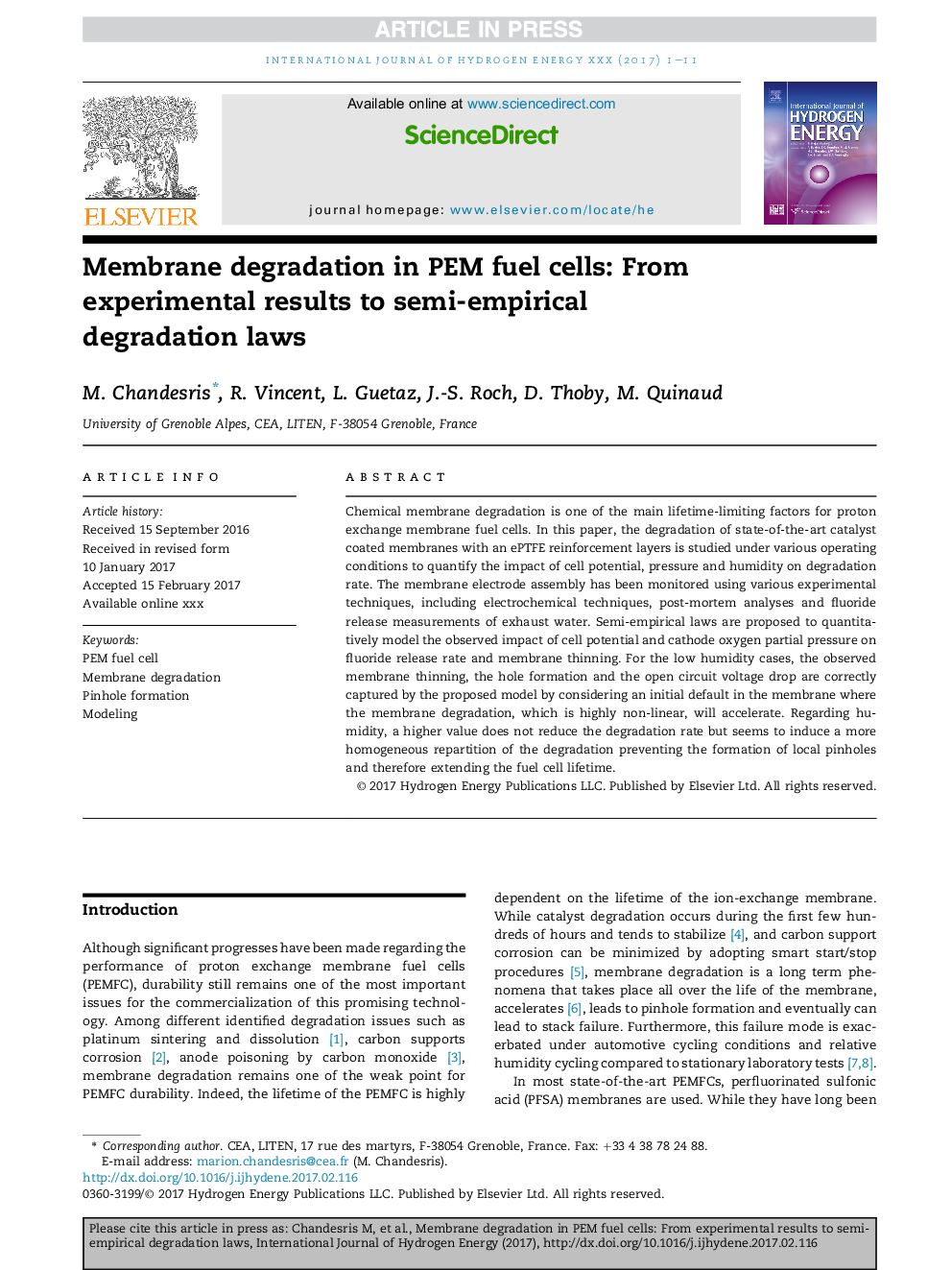| Article ID | Journal | Published Year | Pages | File Type |
|---|---|---|---|---|
| 5148303 | International Journal of Hydrogen Energy | 2017 | 11 Pages |
Abstract
Chemical membrane degradation is one of the main lifetime-limiting factors for proton exchange membrane fuel cells. In this paper, the degradation of state-of-the-art catalyst coated membranes with an ePTFE reinforcement layers is studied under various operating conditions to quantify the impact of cell potential, pressure and humidity on degradation rate. The membrane electrode assembly has been monitored using various experimental techniques, including electrochemical techniques, post-mortem analyses and fluoride release measurements of exhaust water. Semi-empirical laws are proposed to quantitatively model the observed impact of cell potential and cathode oxygen partial pressure on fluoride release rate and membrane thinning. For the low humidity cases, the observed membrane thinning, the hole formation and the open circuit voltage drop are correctly captured by the proposed model by considering an initial default in the membrane where the membrane degradation, which is highly non-linear, will accelerate. Regarding humidity, a higher value does not reduce the degradation rate but seems to induce a more homogeneous repartition of the degradation preventing the formation of local pinholes and therefore extending the fuel cell lifetime.
Related Topics
Physical Sciences and Engineering
Chemistry
Electrochemistry
Authors
M. Chandesris, R. Vincent, L. Guetaz, J.-S. Roch, D. Thoby, M. Quinaud,
